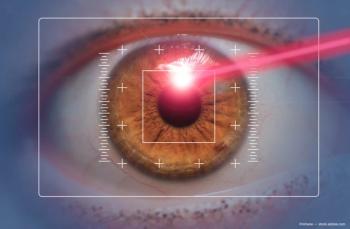
Guarded surgical knives designed to maintain sharpness over time
New guarded knives (Sharpoint, Angiotech) retain their sharpness far longer than other disposable blades, and this durability translates into the ability to perform more procedures with the same instrument and to make cleaner, faster-healing incisions, according to one ophthalmologist.
Key Points
Atlanta-New guarded knives (Sharpoint, Angiotech) retain their sharpness far longer than other disposable blades, and this durability translates into the ability to perform more procedures with the same instrument and to make cleaner, faster-healing incisions, said Lawrence Woodard, MD.
An Atlanta surgeon specializing in cataract, corneal, and anterior segment procedures, Dr. Woodard said he uses the guarded 1.1-mm knives to make paracentesis incisions during cataract surgery and has been very pleased.
"The challenge with disposable knives is that they get dull after you've used them several times," he said. "I've been very impressed with how stable these knives have been and how they remain sharp."
"When we started using them several months ago, I went from being able to use the same knife, on average, three times to using it about 15 times before having to get another one," he said.
He also mentioned that the guarded knives help with the architecture of the incision. "One of the downsides of using the same blade more than once is that it dulls some so your incision architecture is not as clean and the wound is more likely to leak. Even though you use it more times, [this] knife remains sharp, so your incision architecture is tight and consistent."
Newsletter
Don’t miss out—get Ophthalmology Times updates on the latest clinical advancements and expert interviews, straight to your inbox.
















































.png)


